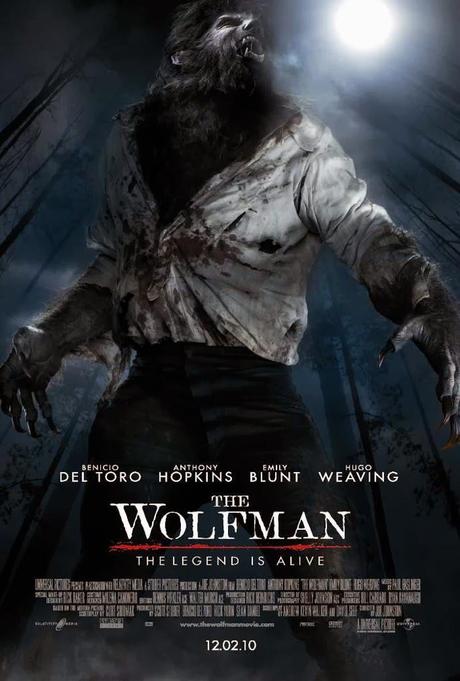 A werewolf, also known as a lycanthrope (from the Greek λυκάνθρωπος: λύκος, lykos, "wolf", and ἄνθρωπος, anthrōpos, "man"), is a mythological or folkloric human with the ability to shapeshift into a wolf or a therianthropic hybrid wolf-like creature, either purposely or after being placed under a curse or affliction (e.g. via a bite or scratch from another werewolf). Early sources for belief in lycanthropy are Petronius and Gervase of Tilbury.The werewolf is a widespread concept in European folklore, existing in many variants which are related by a common development of a Christian interpretation of underlying Indo-European mythology which developed during the medieval period. From the early modern period, werewolf beliefs also spread to the New World with colonialism. Belief in werewolf develops parallel to the belief in witches, in the course of the Late Middle Ages and the Early Modern period. Like the witchcraft trials as a whole, the trial of supposed werewolves emerges in what is now Switzerland (especially the Valais and Vaud) in the early 15th century and spreads throughout Europe in the 16th, peaking in the 17th and subsiding by the 18th century. The persecution of werewolves and the associated folklore is an integral part of the "witch-hunt" phenomenon, albeit a marginal one, accusations of werewolfery being involved in only a small fraction of witchcraft trials.[1] During the early period, accusations of lycanthropy (transformation into a wolf) were mixed with accusations of wolf-riding or wolf-charming. The case of Peter Stumpp (1589) led to a significant peak in both interest in and persecution of supposed werewolves, primarily in French-speaking and German-speaking Europe. The phenomenon persisted longest in Bavariaand Austria, with persecution of wolf-charmers recorded until well after 1650, the final cases taking place in the early 18th century in Carinthiaand Styria.[2]
A werewolf, also known as a lycanthrope (from the Greek λυκάνθρωπος: λύκος, lykos, "wolf", and ἄνθρωπος, anthrōpos, "man"), is a mythological or folkloric human with the ability to shapeshift into a wolf or a therianthropic hybrid wolf-like creature, either purposely or after being placed under a curse or affliction (e.g. via a bite or scratch from another werewolf). Early sources for belief in lycanthropy are Petronius and Gervase of Tilbury.The werewolf is a widespread concept in European folklore, existing in many variants which are related by a common development of a Christian interpretation of underlying Indo-European mythology which developed during the medieval period. From the early modern period, werewolf beliefs also spread to the New World with colonialism. Belief in werewolf develops parallel to the belief in witches, in the course of the Late Middle Ages and the Early Modern period. Like the witchcraft trials as a whole, the trial of supposed werewolves emerges in what is now Switzerland (especially the Valais and Vaud) in the early 15th century and spreads throughout Europe in the 16th, peaking in the 17th and subsiding by the 18th century. The persecution of werewolves and the associated folklore is an integral part of the "witch-hunt" phenomenon, albeit a marginal one, accusations of werewolfery being involved in only a small fraction of witchcraft trials.[1] During the early period, accusations of lycanthropy (transformation into a wolf) were mixed with accusations of wolf-riding or wolf-charming. The case of Peter Stumpp (1589) led to a significant peak in both interest in and persecution of supposed werewolves, primarily in French-speaking and German-speaking Europe. The phenomenon persisted longest in Bavariaand Austria, with persecution of wolf-charmers recorded until well after 1650, the final cases taking place in the early 18th century in Carinthiaand Styria.[2]After the end of the witch-trials, the werewolf became of interest in folklore studies and in the emerging Gothic horror genre; werewolf fiction as a genre has pre-modern precedents in medieval romances (e.g. Bisclavret and Guillaume de Palerme) and develops in the 18th century out of the "semi-fictional" chap book tradition. The trappings of horror literature in the 20th century became part of the horror and fantasy genre of modern pop culture. (taken from www.wikipedia.org)
I thought that aside from vampires, you don't get more "Halloweenish" than that. I decided to watch The Wolfman starring Benicio del Toro, Hugo Weaving, Anthony Hopkins, and Emily Blunt. Granted it isn't the greatest film in the world, or even of the horror genre, but it is entertaining at least, and has enough gore for the average enthusiast. If they would have fleshed out the story and characters it would have been much better, but the director, Joe Johnston, doesn't really work that way; he's more a visual guy, kind of like George Lucas. I don't really know how genuine lycanthropy is, but I do know a young man who wanted to become an owl and meet his owl father one day. Granted he was psychotic, but he believed it through and through. Who knows what is out there. Regardless of what people may perceive, it is still a very large world that we live in, and I believe much of the surface area has yet to be explored. November is almost here, thank God. October has been long enough, and I'm hoping that November is far better despite the fact that there will be snow eventually. It was a busy and productive day, and I will leave it at that. Be careful though when you are out and about during a full moon; apparently statistics suggest that bites from wild animals surge on such nights.
The Wolfman trailer
Documentary on Werewolves (or rather "are they real?"
